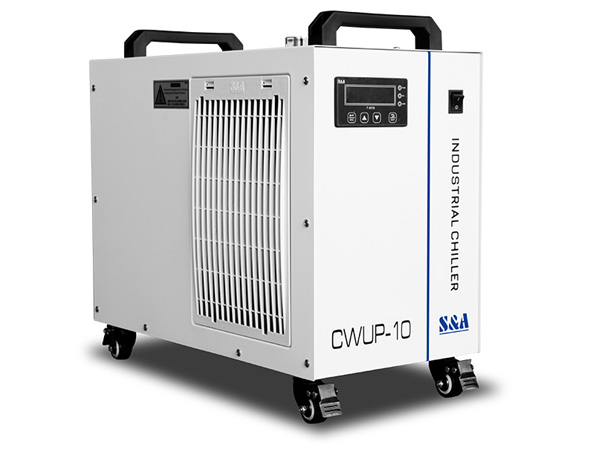![UV laser marking machine chiller UV laser marking machine chiller]()
Laser marking machine features delicate printing effect, clear and long lasting marking and is widely used in different industries. But many users find that there is a huge difference in the price of fiber laser marking machine and UV laser marking machine. So is the application.
Although they are both laser marking machine, fiber laser marking machine and UV laser marking machine adopt different laser sources and the laser powers are quite different. For fiber laser marking machine, it adopts 20W,30W,50W or higher power fiber laser. For UV laser marking machine, it adopts 3W,5W,10W UV laser. Therefore, the main reason for the big price difference of these two types of laser marking machines is that they have different configurations and working principles.
There are 3 levels in the different types of laser marking machines. The low-end laser marking machine is CO2 laser marking machine. The mid-end laser marking machine is fiber laser marking machine and the high-end laser marking machine is the UV laser marking machine. The reason why UV laser marking machine is high-end is that it has the widest application and has the marking effect that other types of laser marking machines can not achieve. Therefore, UV laser marking machine generally work on high-end products, like i-PHONE and iPAD and other consumer electronics. However, as high-end equipment, UV laser marking machine adopts UV laser as the laser source and UV laser is more expensive than the CO2 laser and the fiber laser, but it has the advantage that other two types of laser sources don't have. And that advantage is to restrict thermal stress. That is because UV laser can operate under low power. Through a technique called “cold ablation”, UV laser can produce small heat affecting zone, which makes it ideal for making PCB.
The small heat affecting zone of UV laser marking machine enables it to reduce the charring to the smallest extend. And high power laser sources also have this kind of negative effect. What's more, UV laser has shorter wavelength than many visible lights, so it can not seen with our own eyes, which makes it less harmful to the human body.
UV laser has very high absorption rate to resin, copper, and glass. This feature makes UV laser marking machine become the most ideal processing equipment for PCB, FPC, chip and other high-end complicated applications. Therefore, UV laser marking machine is expensive for a reason.
As mentioned before, UV laser marking machine often adopts 3W, 5W, 10W UV laser source. Since UV laser source is of high price, its service life needs to be well maintained. One of the most common ways is to add a UV laser small chiller unit. S&A Teyu offers CWUP-10 UV laser chiller designed to cool up to 10W UV laser. This small chiller unit features ±0.1℃ temperature stability and supports Modbus-485 communication protocol. For more information about this chiller, click https://www.teyuchiller.com/small-industrial-chiller-cwup-10-for-ultrafast-laser-uv-laser_ul4
![UV laser small chiller units UV laser small chiller units]()












































































































